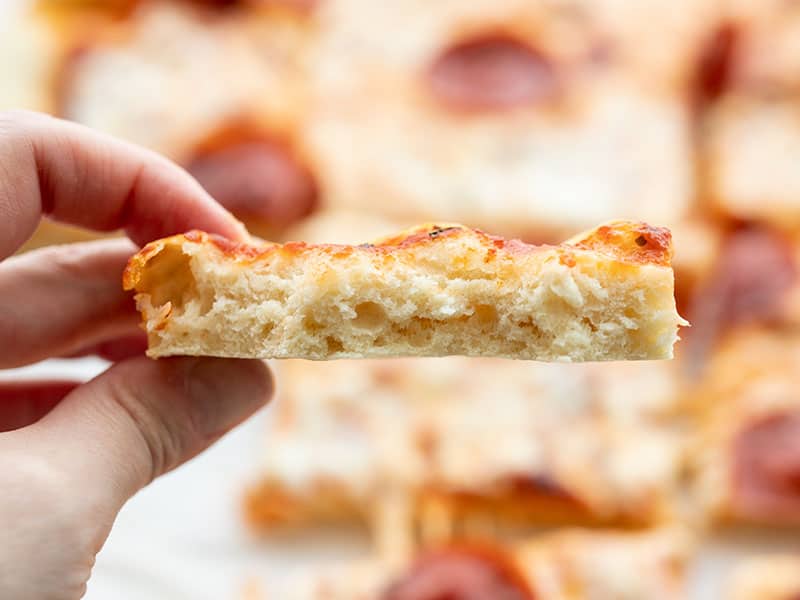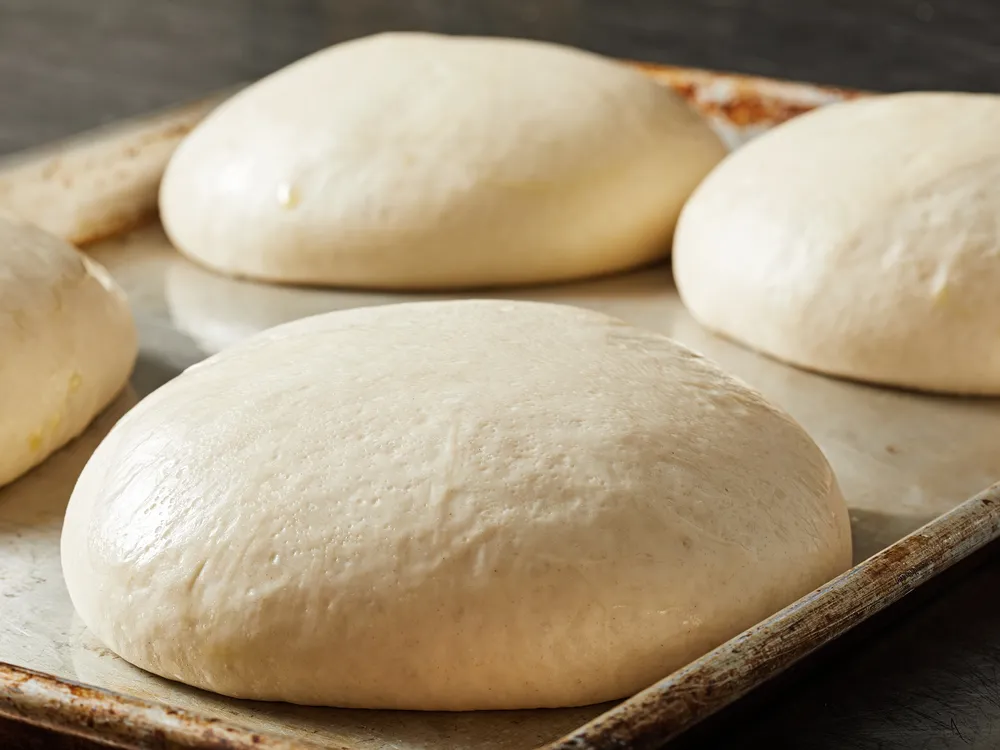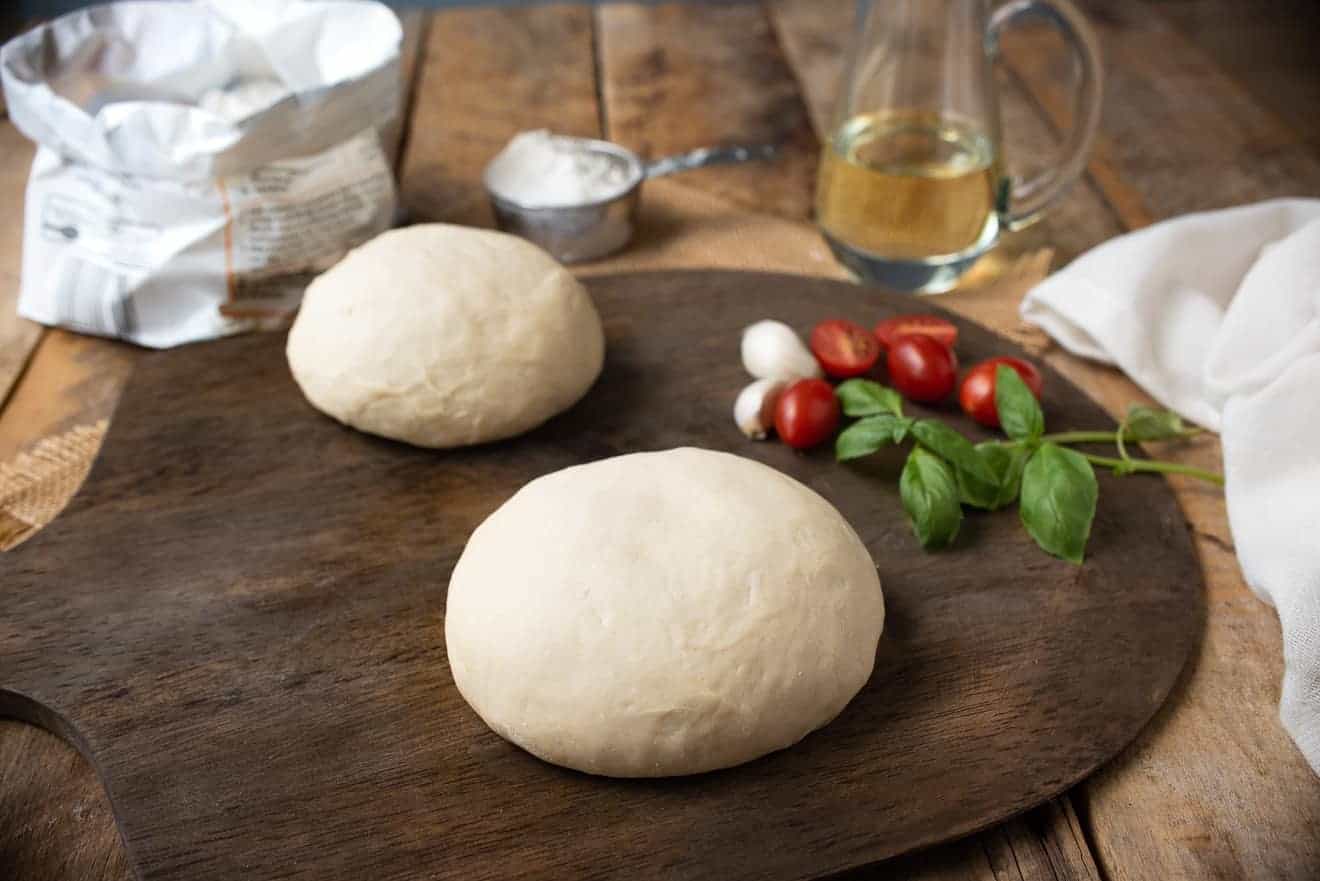Introduction:
How To Make Dough Without Yeast is not only possible but also opens up a world of culinary possibilities, from quick breads and pizza bases to biscuits and flatbreads. Whether you’re out of yeast or simply prefer not to use it, there are several effective alternatives to create delicious and satisfying dough. This guide will walk you through the essentials of making yeast-free dough, including ingredients, techniques, and recipe ideas.

Understanding the Role of Yeast
Yeast is a leavening agent that ferments sugars, producing carbon dioxide gas that causes dough to rise. When yeast is unavailable or unsuitable, other leavening agents like baking powder, baking soda, and even acidic ingredients can be used to achieve a similar effect. These alternatives can create doughs with different textures and flavors, often with the added benefit of faster preparation times.
Key Ingredients for Yeast-Free Dough
Baking Powder: A combination of an acid and a base, baking powder releases carbon dioxide when mixed with liquid and heated. It’s ideal for quick breads, biscuits, and some flatbreads.
Baking Soda: Often used with an acidic ingredient like buttermilk, yogurt, or lemon juice, baking soda provides a quick rise. It’s perfect for pancakes, muffins, and soda breads.
Self-Rising Flour: This pre-mixed flour contains baking powder and salt, simplifying the process of making dough. It’s excellent for making biscuits and simple bread.
Buttermilk and Yogurt: These acidic ingredients react with baking soda to create a rise, adding moisture and tang to the dough.
Eggs: They add structure and leavening, especially in cakes and some bread recipes.
Fat: Butter, oil, or shortening helps create a tender and flaky texture in the dough.
Basic Techniques for Making Yeast-Free Dough
Mixing Dry Ingredients: Start by sifting together your dry ingredients, such as flour, baking powder or soda, and salt, to ensure even distribution.
Incorporating Fat: Cut in butter or other fat using a pastry cutter, fork, or your hands until the mixture resembles coarse crumbs. This step is crucial for achieving a tender texture.
Adding Liquid: Gradually add your liquid ingredients (milk, buttermilk, yogurt) and stir until just combined. Overmixing can result in tough dough.
Kneading: Depending on the recipe, you may need to knead the dough briefly to develop gluten, which gives the dough structure. Be gentle to avoid overworking.
Resting: Allowing the dough to rest for a few minutes can help relax the gluten, making it easier to roll out or shape.
Shaping and Baking: Shape the dough as required by your recipe, whether it’s rolling it out for flatbreads or forming it into biscuits. Bake according to the recipe instructions, typically at a higher temperature to achieve a quick rise and a golden crust.
Recipe Ideas for Yeast-Free Dough
1.Quick Bread
Ingredients: 2 cups all-purpose flour, 1 tablespoon baking powder, 1 teaspoon salt, 1 cup milk, 1/4 cup melted butter.
Method: Preheat the oven to 375°F (190°C). Mix dry ingredients in a bowl. Add milk and melted butter, stirring until just combined. Pour into a greased loaf pan and bake for 25-30 minutes.
2.Flaky Biscuits
Ingredients: 2 cups self-rising flour, 1/4 cup cold butter, 2/3 cup buttermilk.
Method: Preheat the oven to 450°F (230°C). Stir in buttermilk until just combined. Roll out to 1/2-inch thickness and cut into rounds.
3.Flatbread
Ingredients: 2 cups all-purpose flour, 1 teaspoon baking powder, 1/2 teaspoon salt, 3/4 cup water, 2 tablespoons olive oil.
Method: Mix dry ingredients in a bowl. Knead briefly, then divide into small balls. Roll out each ball into a thin round. Cook on a hot griddle or skillet until bubbly and golden, about 1-2 minutes per side.
4.Soda Bread
Ingredients: 4 cups all-purpose flour, 1 teaspoon baking soda, 1 teaspoon salt, 1 3/4 cups buttermilk.
Method: Preheat the oven to 425°F (220°C). Mix dry ingredients in a large bowl. Make a well in the center and pour in the buttermilk. Stir until a dough forms. Turn out onto a floured surface and knead briefly. Shape into a round loaf, place on a baking sheet, and cut a cross on top. Bake for 30-35 minutes.
Conclusion
Making dough without yeast is a versatile and rewarding process that can lead to a variety of delicious baked goods. By understanding the roles of different leavening agents and mastering basic techniques, you can create everything from quick breads and biscuits to flatbreads and soda bread. Experiment with different ingredients and recipes to discover your favorite yeast-free dough creations.
How do you proof dough without yeast?
How To Make Dough Without Yeast Proofing dough is an essential step in bread making, traditionally involving yeast to allow the dough to rise and develop flavor. However, when making dough without yeast, the process and techniques differ significantly. While yeast-based dough relies on fermentation, yeast-free dough depends on alternative leavening agents like baking powder, baking soda, and natural fermentation from wild yeast and bacteria. Here’s a comprehensive guide on how to proof dough without yeast, ensuring your baked goods are still light, fluffy, and flavorful.
Understanding Yeast-Free Proofing
Proofing without yeast involves different principles and techniques. Instead of relying on yeast to ferment sugars and produce carbon dioxide, other leavening agents or natural fermentation methods are used. The goal remains the same: to create a dough that rises and has a pleasant texture and taste.
Key Ingredients for Yeast-Free Proofing
Baking Powder: A chemical leavening agent that releases carbon dioxide gas when it comes into contact with moisture and heat. It’s ideal for quick breads, cakes, and biscuits.
Baking Soda and Acidic Ingredients: Baking soda needs an acid to activate it, such as buttermilk, yogurt, lemon juice, or vinegar. This combination produces carbon dioxide gas, causing the dough to rise.
Sourdough Starter: A natural fermenting agent made from wild yeast and bacteria present in flour and the environment. It can be used to proof dough over a longer period, adding complex flavors.
Self-Rising Flour: Pre-mixed with baking powder and salt, making it convenient for recipes that need a quick rise.
Techniques for Proofing Dough Without Yeast
Using Baking Powder or Baking Soda:
Quick Breads and Muffins: These recipes often rely on baking powder or a combination of baking soda and an acidic ingredient. Mix the dry ingredients, add the wet ingredients, and bake immediately. There’s no need for a long proofing time.
Example: For a basic quick bread, mix 2 cups of flour, 1 tablespoon of baking powder, 1 teaspoon of salt, 1 cup of milk, and 1/4 cup of melted butter. Pour into a loaf pan and bake at 375°F (190°C) for 25-30 minutes.
Natural Fermentation with Sourdough Starter:
Creating a Starter: Mix equal parts flour and water and let it sit at room temperature, feeding it daily with more flour and water until it bubbles and has a tangy smell. This can take about a week.
Proofing Sourdough Dough: Mix the starter with flour, water, and salt to make a dough. Let it rest at room temperature for several hours or overnight, allowing the natural yeast and bacteria to ferment the dough. Shape and bake as desired.
Example: For a basic sourdough, combine 1 cup of active starter, 3 cups of flour, 1 cup of water, and 1.5 teaspoons of salt. Let it rest until doubled in size, shape, and bake at 450°F (230°C) for 30-35 minutes.
Proofing with Self-Rising Flour:
Biscuits and Scones: Self-rising flour simplifies the process by eliminating the need for additional leavening agents. Mix the flour with butter and milk or buttermilk, shape, and bake.
Example: Mix 2 cups of self-rising flour with 1/4 cup of cold butter, and 2/3 cup of buttermilk. Roll out, cut into rounds, and bake at 450°F (230°C) for 10-12 minutes.
Extended Rest Periods:
Hydration and Autolyse: Allowing the dough to rest after mixing the ingredients can help hydrate the flour and develop gluten, improving texture and rise.
Example: After mixing dough for flatbreads or pizza, let it rest for 30 minutes to an hour before shaping and baking.
Tips for Successful Yeast-Free Proofing
Proper Measurement: Accurate measurement of leavening agents is crucial. Too much can cause the dough to rise too quickly and then collapse, while too little may result in a dense texture.
Temperature Control: Maintaining the right temperature is key, especially for natural fermentation. Room temperature is generally ideal, but slightly warmer environments can speed up the process.
Patience with Sourdough: Natural fermentation takes time. Be patient and allow the starter and dough to develop fully for the best results.
Experimentation: Different flours, liquids, and additional ingredients like sugar or honey can affect the proofing process. Don’t hesitate to experiment to find the perfect balance for your recipes.
Conclusion
Proofing dough without yeast is an art that requires an understanding of alternative leavening agents and techniques. By utilizing baking powder, baking soda with acidic ingredients, self-rising flour, or natural fermentation with a sourdough starter, you can achieve delicious and well-risen baked goods. With the right ingredients, techniques, and a bit of patience, yeast-free baking can be just as rewarding and versatile as traditional methods. Discover traditional Italian pasta recipes: Carbonara, Bolognese, Pesto, and more. Authentic and delicious!
Why do you rest dough without yeast?
How To Make Dough Without Yeast Resting dough, whether made with or without yeast, is a crucial step in the bread-making process. While yeast-based dough rests to allow fermentation and leavening, dough without yeast benefits from resting in several different ways. This article explores the reasons behind resting yeast-free dough, the science involved, and how it impacts the final product.

The Science Behind Resting Dough Without Yeast
When you rest dough, several important processes occur, regardless of the presence of yeast. These processes contribute to the dough’s texture, flavor, and overall quality.
Gluten Development:
Gluten Formation: Gluten is a network of proteins found in wheat flour. When flour is mixed with water, gluten strands form, giving the dough its structure and elasticity. Resting the dough allows these gluten strands to relax and align, making the dough easier to shape and handle.
Texture Improvement: Adequately rested dough is less likely to tear or break when rolled out, resulting in a more consistent texture in the final product.
Hydration:
Absorption: During the resting period, flour particles absorb water more completely. This thorough hydration is essential for the dough’s cohesiveness and workability.
Even Distribution: Resting ensures that the moisture is evenly distributed throughout the dough, leading to uniform consistency and baking results.
Autolyse Process:
Breakdown of Starches: Resting allows enzymes in the flour to break down starches into simpler sugars. This process, known as autolyse, improves the dough’s flavor and color.
Reduced Kneading: An autolyse period can reduce the need for extensive kneading, as the gluten network develops more naturally, leading to a lighter and more tender final product.
Relaxation of Dough:
Easier Shaping: Resting the dough relaxes the gluten network, making it more pliable and easier to shape without springing back.
Preventing Shrinkage: For items like pizza dough or flatbreads, resting helps prevent the dough from shrinking back immediately after being rolled out.
Practical Benefits of Resting Yeast-Free Dough
Resting yeast-free dough offers several practical benefits that directly enhance the baking process and the quality of the final product.
Improved Workability:
Less Sticky Dough: Rested dough is typically less sticky and easier to handle, making tasks like rolling, cutting, or shaping much simpler.
Smoother Surface: The dough’s surface becomes smoother and more uniform, which is particularly beneficial for pastries and biscuits.
Enhanced Flavor and Aroma:
Flavor Development: The autolyse process enhances the natural flavors of the flour, resulting in a richer, more complex taste.
Maillard Reaction: Properly rested dough can achieve better browning during baking due to the breakdown of starches into simpler sugars, which caramelize and enhance the aroma and flavor.
Better Texture:
Tender Crumb: Resting contributes to a more tender crumb in baked goods like biscuits and scones, making them soft and flaky rather than tough and chewy.
Crispy Crusts: For items like pizza or flatbreads, resting helps achieve a crispy crust with a well-developed interior structure.
Consistency in Baking:
Uniform Rise: Rested dough tends to rise more uniformly when leavened with baking powder or baking soda, resulting in evenly baked products.
Predictable Results: The consistency gained from resting makes it easier to predict and control the final outcome, ensuring your baked goods turn out as expected.
Examples of Resting Times for Yeast-Free Dough
Quick Breads and Muffins:
Generally, these do not require a long resting period. However, a brief rest (5-10 minutes) can help hydrate the flour before baking.
Biscuits and Scones:
A short rest (15-30 minutes) after mixing can make the dough easier to handle and improve flakiness.
Pizza and Flatbreads:
Resting the dough for at least 30 minutes to an hour can significantly improve workability and texture.
Pasta Dough:
Resting pasta dough for 30 minutes to an hour allows the gluten to relax, making it easier to roll out thinly.
Conclusion
How To Make Dough Without Yeast Resting dough without yeast is a vital step that enhances gluten development, hydration, and overall dough quality. Whether making quick breads, biscuits, or pizza, allowing your dough to rest ensures better workability, improved texture, and richer flavor. Understanding the science and benefits behind this simple yet crucial step can elevate your baking, resulting in consistently delicious and well-textured baked goods. Easy Whole Wheat Sandwich Bread: Mix whole wheat flour, water, honey, salt, and baking powder. Bake until golden brown!
Will pizza dough rise without yeast?
How To Make Dough Without Yeast When you think of pizza dough, the image of a light, airy, and slightly chewy crust likely comes to mind. Traditionally, yeast is the leavening agent responsible for this rise and texture. However, if you’re wondering whether pizza dough can rise without yeast, the answer is yes—although the process and results differ. This article explores the various methods and techniques to achieve a risen pizza dough without using yeast.

Understanding Yeast-Free Leavening
Yeast works by fermenting sugars and releasing carbon dioxide gas, which gets trapped in the dough, causing it to rise. Without yeast, other leavening agents must be employed to produce similar effects. The most common alternatives include:
Baking Powder: A combination of an acid and a base, baking powder releases carbon dioxide when mixed with moisture and heat.
Baking Soda and Acidic Ingredients: Baking soda needs an acidic component to activate and release carbon dioxide.
Self-Rising Flour: This is flour pre-mixed with baking powder and salt, simplifying the process of making dough rise without additional ingredients.
Techniques for Making Pizza Dough Rise Without Yeast
Using Baking Powder:
Ingredients: 2 cups all-purpose flour, 1 tablespoon baking powder, 1 teaspoon salt, 3/4 cup water, 2 tablespoons olive oil.
Method: Combine the dry ingredients in a bowl. Roll out the dough to your desired thickness and top with your favorite ingredients.
Using Baking Soda and Acidic Ingredients:
Ingredients: 2 cups all-purpose flour, 1 teaspoon baking soda, 1 teaspoon salt, 3/4 cup buttermilk or yogurt, 2 tablespoons olive oil.
Method: Mix the flour, baking soda, and salt in a bowl. Add buttermilk or yogurt and olive oil, stirring until combined. Knead the dough briefly, roll it out, and proceed with topping and baking as above.
Using Self-Rising Flour:
Ingredients: 2 cups self-rising flour, 3/4 cup water, 2 tablespoons olive oil.
Method: Mix the self-rising flour with water and olive oil until a dough forms. Knead on a floured surface, roll out, and prepare your pizza for baking.
Characteristics of Yeast-Free Pizza Dough
Texture:
Crispier Crust: Yeast-free pizza dough often results in a crust that is crispier and slightly denser than its yeast-based counterpart.
Less Chewy: The absence of yeast means the dough won’t have the same chewy texture, as there are fewer air pockets formed.
Flavor:
Neutral Taste: Without the fermentation process, yeast-free dough lacks the subtle tangy flavor of yeast-based dough. This can be mitigated by adding flavorful ingredients such as herbs, garlic, or cheese to the dough.
Rise:
Quick Rise: Leavening agents like baking powder and baking soda work quickly, allowing the dough to rise during baking rather than requiring a proofing period.
Uniform Rise: The rise tends to be more uniform but less pronounced than yeast-based dough, resulting in a thinner, flatter crust.
Tips for Successful Yeast-Free Pizza Dough
Proper Measurement: Ensure accurate measurement of leavening agents to achieve the desired rise without over or under-leavening.
Preheating the Oven: A hot oven (450°F or higher) is essential for quickly activating the leavening agents and achieving a good rise.
Thin Crust: Rolling the dough thinner can help compensate for the lack of yeast, ensuring it bakes through evenly and achieves a pleasant texture.
Flavor Enhancements: Incorporate herbs, garlic powder, or grated cheese into the dough to add depth of flavor.
Conclusion
How To Make Dough Without Yeast While traditional pizza dough relies on yeast for its characteristic rise and texture, it’s entirely possible to create a risen, satisfying pizza dough without yeast. By using alternatives like baking powder, baking soda with acidic ingredients, or self-rising flour, you can achieve a delicious crust that, while different, is equally enjoyable. Experiment with these methods to find your perfect yeast-free pizza dough, and enjoy the convenience and speed they offer

